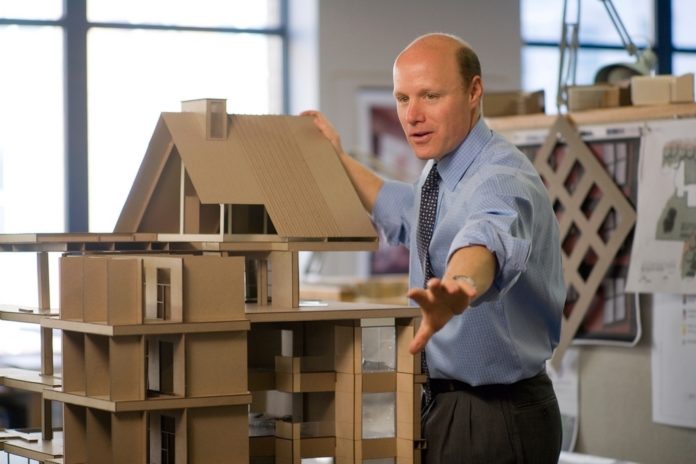
Boston-based Payette was recently awarded a contract to design the new College of Pharmacy building at the University of Rhode Island’s Kingston campus. The firm also designed the now-complete Center for Biotechnology and Life Sciences.
Todd Sloane, an associate principal at Payette, recently took some time to speak with Providence Business News about the pharmacy building and the difference between designing for higher education versus traditional commercial offices.
PBN: Can you tell us a little about the design of the new pharmacy building at the University of Rhode Island?
SLOANE: As one of the most well-known pharmacy programs in the country, we wanted to help create a place that was commensurate with URI’s reputation for innovation and hands-on learning. One aspect of this is the two living gardens surrounding the site. One is a Medicinal Garden, which features an educational display of medicinal plants, herbs and spices and also functions as a conservatory source of standard specimens.
We also used the conditions of site to organize the building itself. Three neighborhoods or social centers, which are two-story spaces that connect the building floors, create a very dynamic interior. The building has specialized labs for teaching and research, including programs for pharmaceutics manufacturing, pharmacognosy, 3D visualization and histology. A working patient clinic also gives students hands-on clinical experience. It is truly a living laboratory for ideas.
PBN: How does this building compare to the URI Center for Biotechnology and Life Sciences (CBLS), which your firm also designed?
SLOANE: The buildings might be thought of as companion structures, with many similarities in terms of their outward expression, but they are really two distinct purpose-built buildings. The Center for Biotechnology and Life Sciences was designed in response to the university’s goal of elevating their presence in research science.
Several recent reports in the Rhode Island press note the lack of qualified employees for the growing biotechnology industry in the state. The most exciting part of this project was the collaboration with the university to help address this shortage and support the goal of contributing to the long-term economic development of biotechnology in the state of Rhode Island. The first step is introducing students to science and then, through hands-on research throughout their academic career, preparing them for careers in the biotech industry.
What’s different about the career training aspect of the CBLS is the establishment of incubators for promising research right in the building itself. Students not only get the chance to do real research with faculty members during their undergraduate education, but also get to see scientific principles put into action through the collaborative research. It’s a very compelling and complete educational approach, which we are seeing in colleges and universities throughout the country as an emerging trend in undergraduate education. Rhode Island is at the forefront of this concept.
PBN: Both buildings include lots of glass and other contemporary features. How do you ensure these types of buildings mesh with the more traditional brick buildings that dot URI and other Rhode Island campuses?
SLOANE: Brick is a great material that lends itself to all kinds of expression – from traditional to modern. It is also highly durable and low maintenance and most importantly, can contribute to a high-performance building envelope. We used brick as a backdrop that could accommodate and contain some more contemporary features, including glass curtainwall. At the same time, we referred to more traditional New England forms, including sloped roofs, which can be seen throughout our local campuses and communities. Our goal was to strike a balance between these historic and traditional building vocabularies and the desire to express the innovative and exciting work going on in the buildings themselves.
PBN: Can you speak about the challenges of designing a building for academic use rather than, say, corporate offices?
SLOANE: As stated earlier, campuses have a unique set of challenges and opportunities, and mission-based initiatives that are different than any other kind of setting. It is more important on a campus to be a part of a larger ensemble of buildings and spaces that work together. The history of a campus still has many things to teach us about the future. This is always is the starting point for us.
Another important element of campus design is building for very high durability and efficiency. When you look at academic buildings, you have to design for the permanence of 50 to 100 years, with a built-in flexibility to respond to new ways of learning, new research and new ideas.
PBN: Any plans to keep pursing projects at URI or other Rhode Island universities?
SLOANE: Rhode Island is at an exciting and challenging juncture. Traditional industries in the state are being re-imagined and replaced by emerging technological and scientific developments. We enjoy working on campuses because they have a pivotal role to play in this exploration. With many competing demands, including giving students the best education possible, preparing them to be connected and engaged citizens of the world and being a supporter of the region’s long-term economy, colleges and universities are some of the most exciting places to work. We definitely want to continue finding new solutions to address these questions.











